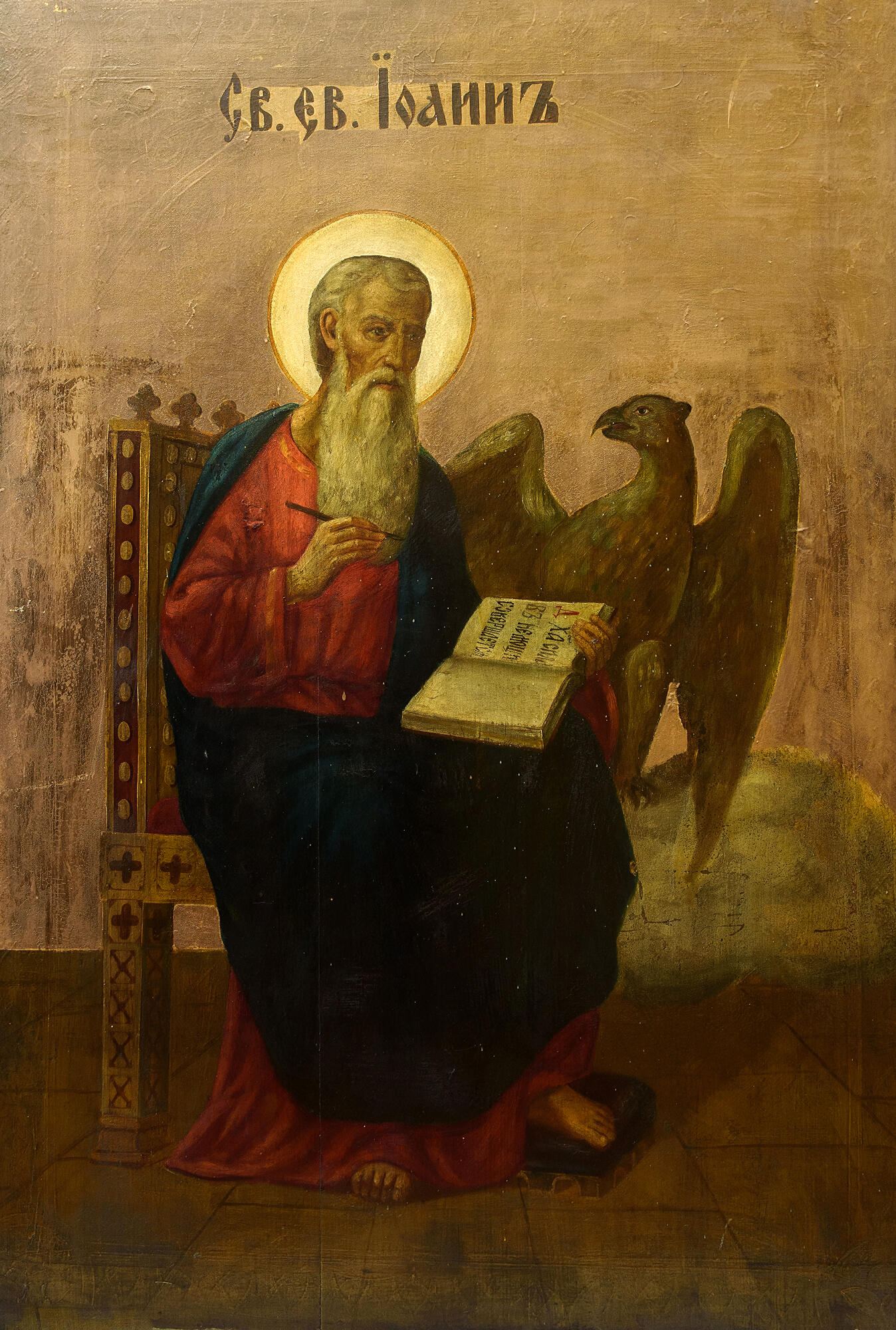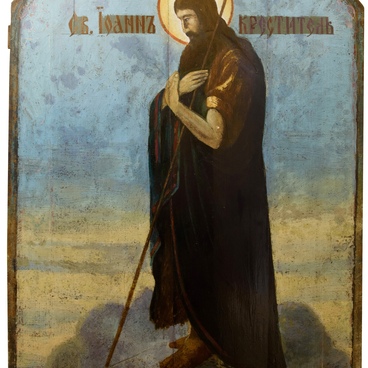Saint John the Theologian is one of the most venerated apostles in Orthodox culture. The most common icons of John the Theologian are those depicting him with a book — the Gospel. He is often depicted with a quill and an inkwell, working on writing the Holy Scripture. The symbol of John the Apostle was an eagle, the symbol of the descent of the Holy Spirit and heavenly wisdom. Its image can often be found alongside images of the Saint.
The symbolic association of the Apostles with living creatures is borrowed from the vision of the prophet Ezekiel, which describes a winged creature with four faces — a man, a lion, an ox and an eagle. In John’s own Revelation this tetramorph is represented in the form of four separate apocalyptic beings — the guardians of the four corners of the Lord’s throne and the four corners of Paradise.
John the Apostle is the author of one of the four Gospels in which the theological aspects of the teachings of Jesus Christ are most explicitly addressed. In this respect, the gospel he presents differs from the other ones, where the emphasis is on the event-based narrative. It is also noteworthy that the Apostle was the youngest follower of Christ and subsequently composed the text of the famous Revelation, which reflected the eschatological and apocalyptic ideas of the early Christian church. This text is still part of the main body of works in the New Testament. There is also anecdotal evidence that John the Apostle was entrusted with guarding and accompanying the Virgin Mary after the death of Jesus Christ.
The icon depicts the Apostle as a meek and majestic old man, his features reflecting deep spirituality and tenderness, with a stamp of sublime serenity on his face and a piercing gaze. Significant elements of the composition, apart from the Apostle himself, are the book and the eagle. For a long time, the icon decorated the temple in honor of the icon of the Mother of God “Joy of All Who Sorrow” in the town of Michurinsk where during the Great Patriotic War an official Orthodox community was reestablished (among the first in the Tambov region). At the beginning of the 21st century, during the reconstruction of the church, many icons and items were handed over for permanent storage in the Michurinsk Museum of Local Lore. Among them was this icon of Apostle John the Evangelist, which is now on permanent display in the Museum’s exhibition hall, dedicated to the history of Orthodoxy in the town.
The symbolic association of the Apostles with living creatures is borrowed from the vision of the prophet Ezekiel, which describes a winged creature with four faces — a man, a lion, an ox and an eagle. In John’s own Revelation this tetramorph is represented in the form of four separate apocalyptic beings — the guardians of the four corners of the Lord’s throne and the four corners of Paradise.
John the Apostle is the author of one of the four Gospels in which the theological aspects of the teachings of Jesus Christ are most explicitly addressed. In this respect, the gospel he presents differs from the other ones, where the emphasis is on the event-based narrative. It is also noteworthy that the Apostle was the youngest follower of Christ and subsequently composed the text of the famous Revelation, which reflected the eschatological and apocalyptic ideas of the early Christian church. This text is still part of the main body of works in the New Testament. There is also anecdotal evidence that John the Apostle was entrusted with guarding and accompanying the Virgin Mary after the death of Jesus Christ.
The icon depicts the Apostle as a meek and majestic old man, his features reflecting deep spirituality and tenderness, with a stamp of sublime serenity on his face and a piercing gaze. Significant elements of the composition, apart from the Apostle himself, are the book and the eagle. For a long time, the icon decorated the temple in honor of the icon of the Mother of God “Joy of All Who Sorrow” in the town of Michurinsk where during the Great Patriotic War an official Orthodox community was reestablished (among the first in the Tambov region). At the beginning of the 21st century, during the reconstruction of the church, many icons and items were handed over for permanent storage in the Michurinsk Museum of Local Lore. Among them was this icon of Apostle John the Evangelist, which is now on permanent display in the Museum’s exhibition hall, dedicated to the history of Orthodoxy in the town.


